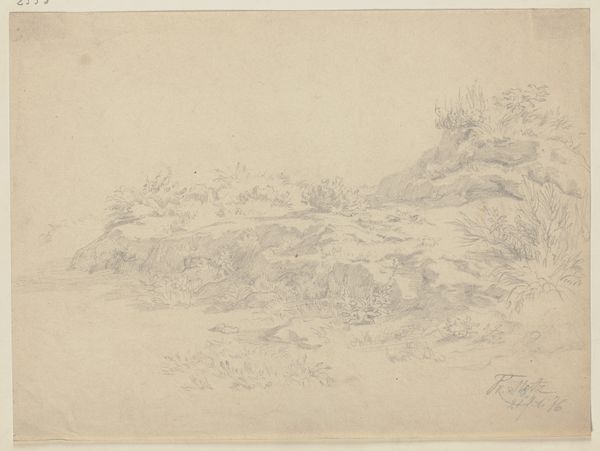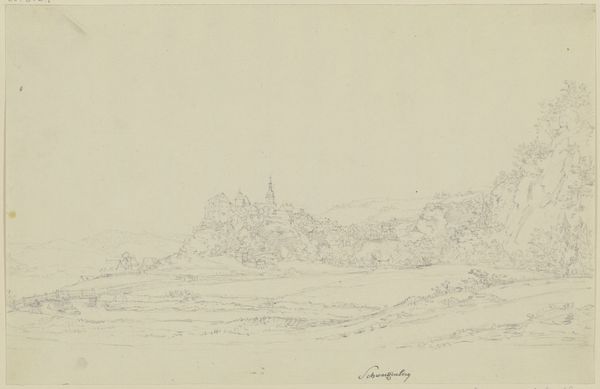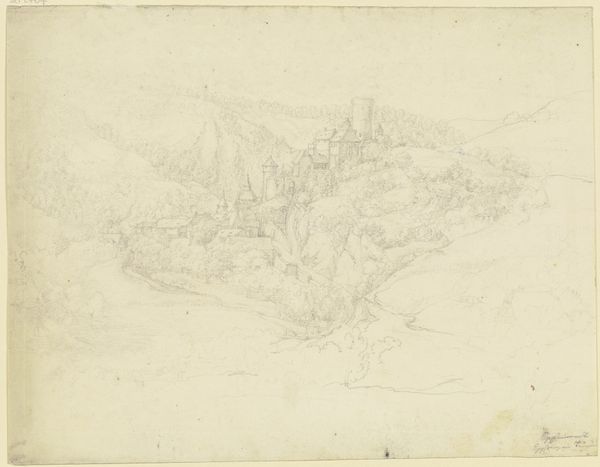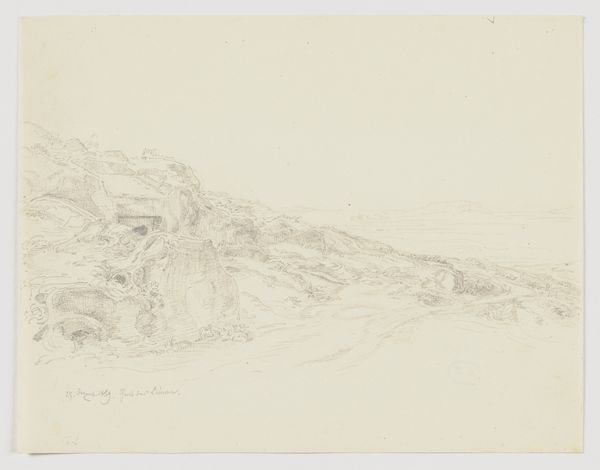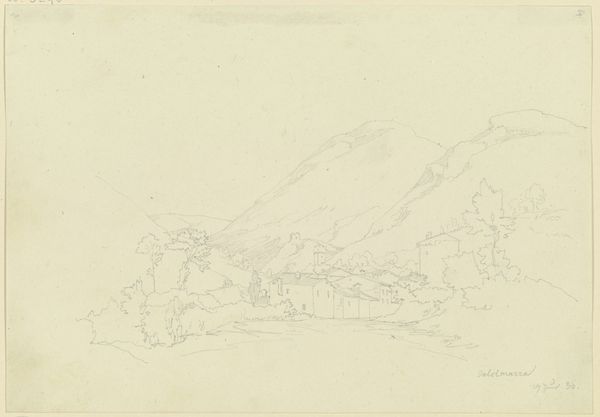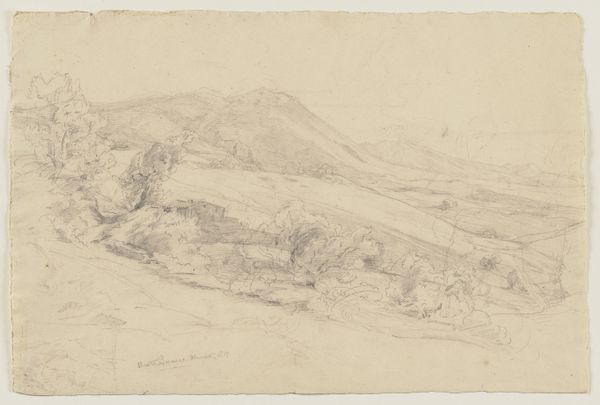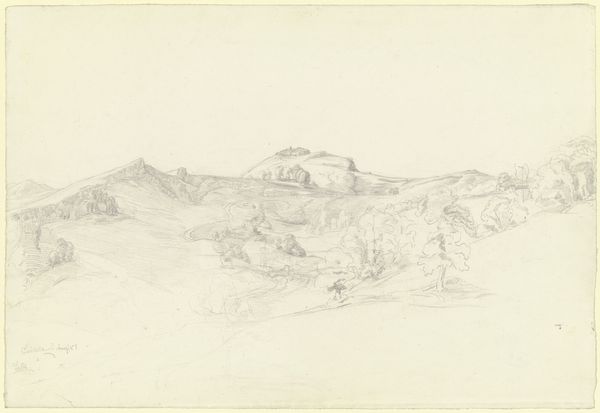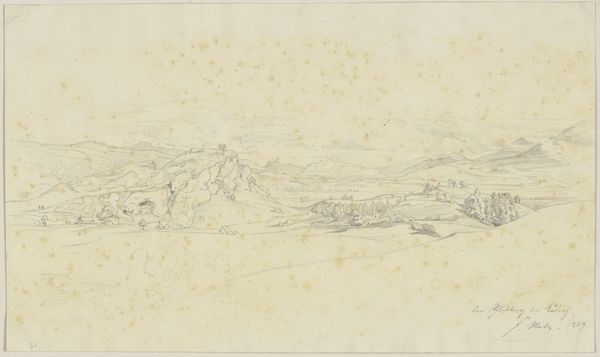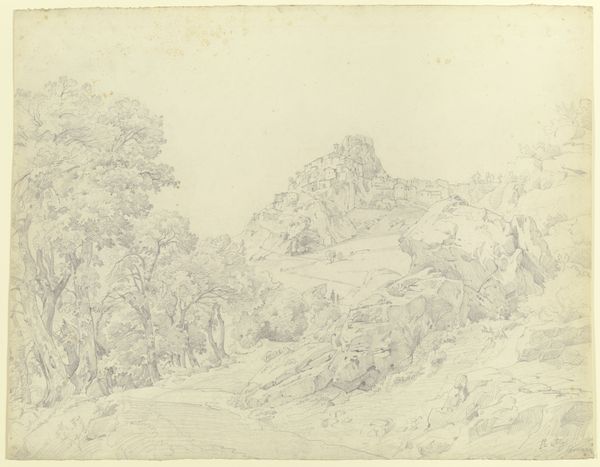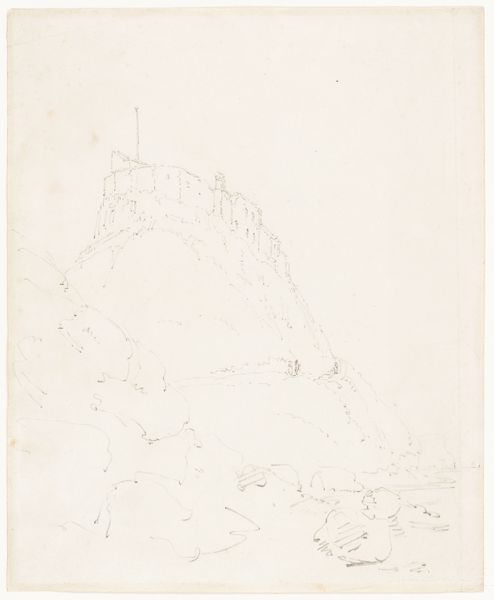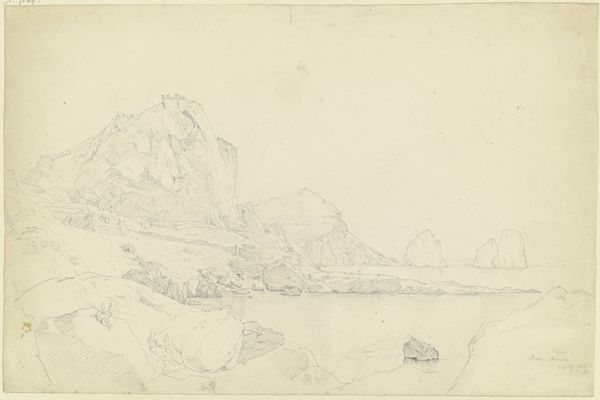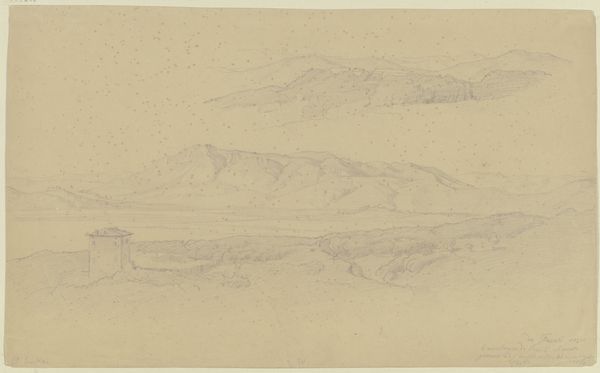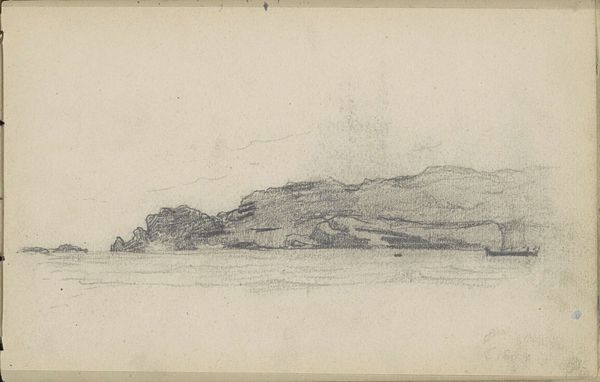
Copyright: Public Domain
Curator: This is “Audorf,” a graphite and pencil drawing on paper by Ludwig Metz, created in 1862. You can find it here at the Städel Museum. Editor: It's remarkably understated. A quick sketch that somehow feels complete. The overall tonal range is narrow. You can almost feel the grain of the paper. Curator: The romantic style is prevalent. Look at the lone figure scaling the hill, the ruined castle barely visible. What meanings might those ruins hold, clinging to that steep incline? They become symbolic remnants of authority and resilience, don’t you think? Editor: Ruins always signal labor to me – the quarrying, shaping, lifting of stones. Look how lightly sketched the figure is compared to the mass of the rocks; he’s dominated by that hill and whatever stone remnants lie up there. He probably can’t own any of it! What's your feeling about this juxtaposition of weight and lightness? Curator: The castle suggests themes of decay and the passage of time, certainly, a kind of memento mori. The natural world has clearly begun to reclaim it. And it invites contemplation of former glories and vanished empires. What do you think of that symbolic interaction with the surrounding landscape? Editor: It’s also the material presence of the surrounding landscape that I appreciate here. This image brings forward a material tension inherent in drawing. How to transcribe that mass with graphite onto a piece of pulp? Pencil feels almost insufficient for such monumental tasks, really highlighting the means of its production. Curator: In many ways, the image conveys both physical reality and spiritual contemplation—the raw materials of existence, rendered through a veil of romantic sensibility. That is powerful. Editor: I’m left thinking about the conditions under which Metz might have been working—how his class position, even the lead in his pencil, shaped this quiet commentary on nature, labor, and power.
Comments
No comments
Be the first to comment and join the conversation on the ultimate creative platform.
